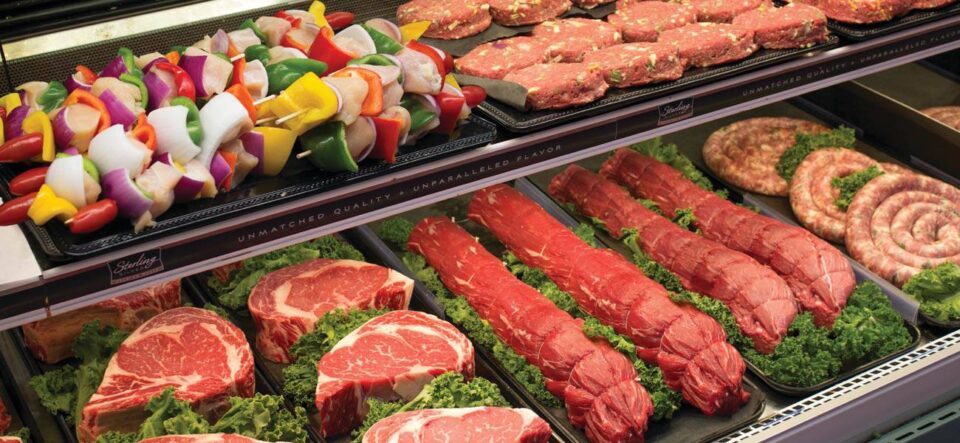Butcher shop owners can capitalize on this growth trend by providing customers with a high-quality shopping experience, including showcasing their products in butcher display fridge that keep meats fresh and inviting. In this article you’ll learn 7 steps to help you open a butcher shop easily.
Table of Contents
1. Market Research and Planning
Before you open your butcher shop, it’s essential to conduct thorough market research and develop a solid business plan. This will help you identify your target market, analyze the competition, and assess the demand for your products and services.
- Demand: Evaluate the demand for a butcher shop in your area. Consider factors such as population density, income levels, and cultural preferences. Conduct surveys or engage in discussions with potential customers to gauge their interest.
- Business Plan: With the gathered information, create a comprehensive business plan. Outline your business goals, financial projections, marketing strategies, and long-term growth plans.
2. Legal and Regulatory Requirements
Opening a butcher shop involves navigating various legal and regulatory requirements. Be sure to research and obtain the necessary permits and licenses required in your area.
- Business Registration: Choose a suitable business structure (e.g., sole proprietorship, LLC, or corporation) and register your business with the appropriate authorities.
- Permits and Licenses: Research the permits and licenses required in your area for a food-related business. This often includes health permits, food handling licenses, and local business permits.
- Health and Safety Regulations: Strict health and safety regulations govern the handling and sale of meat products.
3. Location and Equipment
The location of your butcher shop and the equipment you use are pivotal to your business’s success. Two key factors to consider when opening a butcher shop are location and equipment. Choose a location with high foot traffic and visibility, and proximity to your target market. Consider the accessibility of suppliers and the potential for growth in the area.
Invest in the necessary equipment, including meat slicers, refrigeration units, cutting tables, and packaging materials. Ensure all equipment meets industry standards for safety and efficiency.
4. Sourcing Suppliers
The quality and consistency of your meat products largely depend on your suppliers. Build strong relationships with reputable sources known for their quality and ethical practices. Consider partnering with local farmers or ranchers for a farm-to-table approach.
- Quality Control: Implement a robust quality control system to inspect incoming meat shipments. Ensure that the products meet your standards before they reach your customers.
By carefully selecting and managing your suppliers, you can ensure that your butcher shop offers the highest quality meats to your customers.
5. Marketing and Promotion
Creating a brand identity and effectively marketing your butcher shop will help you attract and retain customers. You can showcase your high-quality meat products in serve over counter display fridge to entice customers and make a positive impression. Some other strategies you can apply:
- Marketing Strategy: Craft a marketing strategy that includes online and offline channels. Utilize social media or a professional website.
- Digital Marketing: Leverage digital marketing tools and social media platforms to connect with customers. Share updates on product offerings, promotions, and customer testimonials.
- Local Community Engagement: Building a strong local presence can help foster customer loyalty. Engage with the local community by participating in food festivals or charity events
6. Staffing and Training
Hiring the right staff and providing them with proper training is essential for delivering excellent customer service and maintaining high food safety standards.
- Hiring Skilled Butchers and Staff: Hire skilled butchers who are knowledgeable about different cuts of meat and can provide expert advice to customers. Additionally, hire staff for customer service roles.
- Providing Training: Train your employees in meat cutting techniques, food safety, customer service, and product knowledge. Continuously update their skills to meet evolving industry standards.
- Implementing Fair Compensation and Benefits: Offer competitive compensation packages and benefits to attract and retain talented staff.
7. Grand Opening and Operations
Once you’ve completed the preparation stages, it’s time to open your butcher shop and manage day-to-day operations. This includes planning a grand opening event to generate excitement and attract customers, ensuring product quality and customer satisfaction, and continuously monitoring the performance of your shop.
Conclusion
Opening a butcher shop in 2024 can be a rewarding endeavor, offering both financial potential and the opportunity to serve your community. By following the seven easy steps outlined in this article, you can navigate the path to success in this exciting industry.

